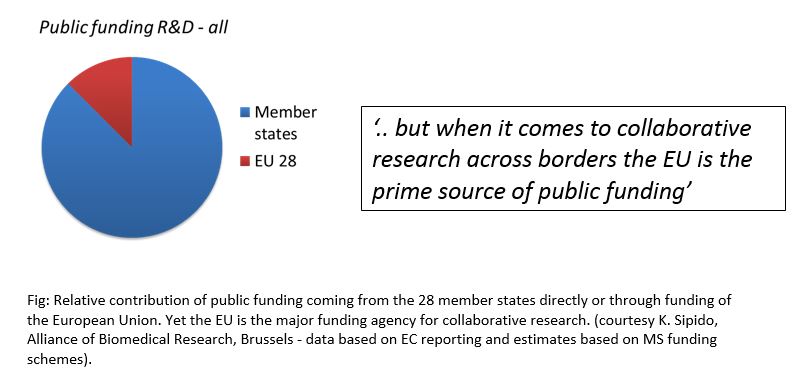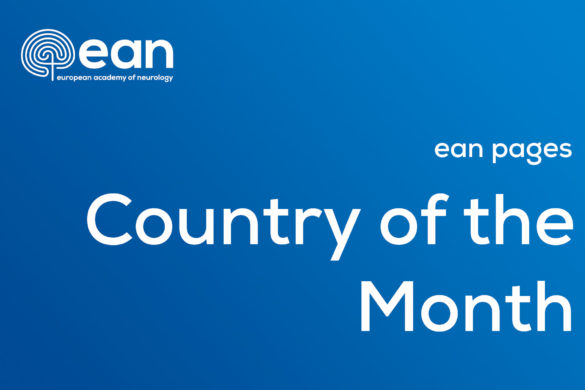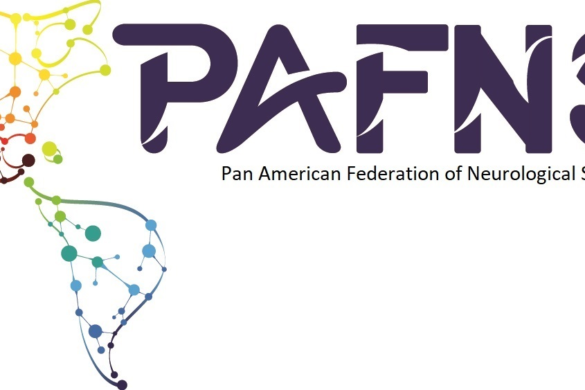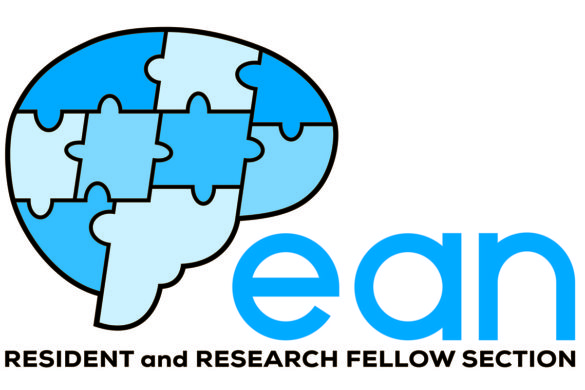 by Günther Deuschl
by Günther Deuschl
European institutions are sometimes discredited and put into questions. This is particularly true in these times of populistic political movements which try to steer the wheel of European unification backwards. Reasons given by opponents are that ‘European efforts are considered too slow, too burocratic and too inflexible’. ‘There are too many cooks preparing the meal’. Sometimes we hear this also from scientists. The logical conclusion is to spend the money at home in their own countries. The latter view is sometimes even expressed by people who in principle share the European perspective. Populistic politicians go so far to even question the whole EU project. In this respect medical research community can make an argument and a big contribution to the understanding why the EU is important.
In a recent overview of Prof. Karin Sipido, past-president of the Alliance of Biomedical Research, reported that Europe 28 as a whole spends 10% of its gross national product on health care which amounts to 1.400 billions €. This includes all money no matter if from governments or industry. Only 4 % of that money goes into health research (Bouillon et al. Lancet, 2015; Deloitte report*). This is a surprisingly small percentage given the many challenges of the healthcare system which can only be solved with progress in research.
Furthermore 59% of this research money is spent by industry as research and development expenses and 39% is paid for grants and research institutes by the member states. Only 2% of this budget is coming through the EU research budgets. However, the interesting observation is that the vast majority of this money goes into transnational collaborative research.

Thus, among all transnational collaborative research projects it is estimated that around 90% are funded through the EU as very few national public funding agencies directly support crossborder collaborative projects (see fig 1). The value of cross-border collaborative versus national research is hard to measure. Many participants of EU collaborative projects testify about the boost of their through this networking and exchange of ideas. One objective way to look at this is to compare the impact factors of transnational collaborative versus single center studies. This has been done for cardiologic studies. It turned out that the impact factor for such studies was on average twice as high as for single center studies (Gal et al. 2016). More importantly there are scientific reasons to work on topics in a collaborative network. This may be observational or interventional studies or any other type of study which can better be performed with a multicenter approach. Most of the studies which are collaborative cover clinical rather than basic science. For patients this collaboration is terribly needed.
Research is by its nature international. For neurology as a research intensive discipline the need for collaborative research is particularly high. We have good reasons to support European research policy and the observations which I reported above teach us several lessons. Strengthening European research means strengthening collaborative research. We need to convince national and European politicians to go against the current political climate. The need for more successful research to find a cure for neurologic diseases research is an argument in favor of maintaining and even extending the European research policy. Science and in particular clinical science is therefore one of the arguments favoring to continue unification of European unification. The past decades have shown a remarkable prosperity of neurological research in Europe and for continuing growth an extension of European funding policy is needed.
I wish all our readers a merry Christmas and a happy new year.
* Investing in European health R&D. A pathway to sustained innovation and stronger economies.
The Deloitte Health Economics Group, commisoned by Janssen Pharmaceutica NV
Available from: http://www.janssen-emea.com/sites/default/files/health-policy-centre/Investing%20in%20European%20health%20RnD.pdf











